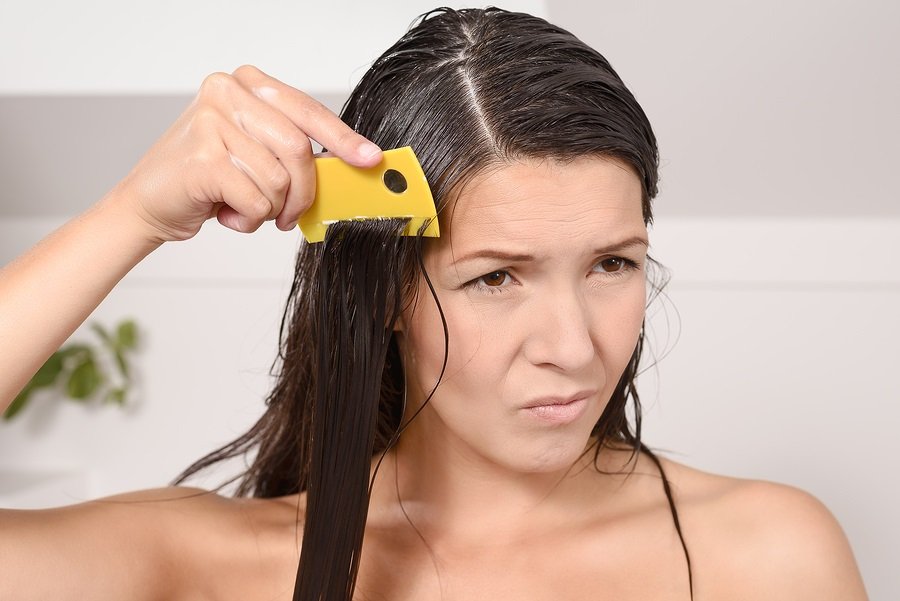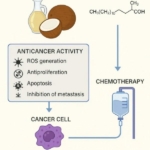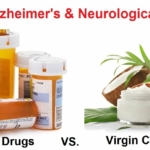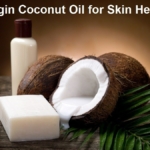
By Dr. Mercola
Only one thing sends more shivers down the spines of school-aged children’s parents than head lice… and that is mutant head lice. Research from 2014 of lice samples from the US and Canada showed almost all of the insects (99.6 percent) had developed gene mutations making them resistant to common over-the-counter lice shampoos.1
Such shampoos often contain the toxic pesticide permethrin… which should not be placed anywhere near a child’s scalp due to the health risks alone. But now it appears the chemicals will no longer be very effective either.
Pesticide-Resistant Lice Widespread in the US
The researchers from the above-mentioned study conducted another study this year that was presented at the American Chemical Society meeting in August. They sampled lice from 30 states and found lice from 25 of them carried the resistance genes.
In California, Florida, Maine, and Minnesota, every insect sampled was resistant. The problem with resistance was first detected in the 1990s and has been growing since. As CNN reported:2
“The insecticides in these products are supposed to work by getting into the nerve cells of lice and changing the cells’ chemistry in a way that leads to muscle paralysis and eventually death.
However, there are lice that randomly have mutations in genes that make them less susceptible to these insecticides, said Richard Pollack, a public health entomologist at Harvard University.
It is not clear how, but it could be that these genetic changes cause insect nerve cells to take up less insecticide or to pump more of it out of the cells. When these insecticides are used a lot, the naturally resistant, probably rare, lice have a survival advantage.
Just like how bacterial populations can become resistant to antibiotics, these lice take over the population, Pollack said.”
The study was funded by pharmaceutical company Sanofi, which owns Sklice lotion, a newer generation lice-fighting product that contains the anti-parasitic drug ivermectin (and may cost up to $200, plus the doctor’s visit for a prescription).
But although these newer products will be touted as the solution to the mutant head lice, it’s likely only a matter of time before they develop resistance to the newer chemicals too. CNN noted:3
“There may be lice that harbor some level of resistance to these newer products and they would eventually take over the population if the other products became widely used, Pollack said. ‘I do expect that we will see resistance to any product with the exception perhaps of combing and heat and smothering the lice,’ Pollack said.”
Why Pyrethroid Insecticides Should Be Avoided…
Pyrethroid insecticides such as permethrin are the active ingredients in most over-the-counter lice shampoos. Pyrethroids — synthetic chemicals derived from natural chemicals found in chrysanthemums — have risen in popularity over the past decade. There are currently more than 3,500 commercial products containing this insecticide.
This includes items like roach sprays, flea bombs, and dog flea or tick collars and medicated shampoos. Lice shampoos may also contain pyrethrins, which are botanical insecticides derived from chrysanthemums.
Both pyrethroids and pyrethrins have similar chemical structures and act in a similar manner. According to the US Environmental Protection Agency (EPA):4
“Most pyrethrins and some pyrethroid products are formulated with synergists, such as piperonyl butoxide and MGK-264, to enhance the pesticidal properties of the product. These synergists have no pesticidal effects of their own but enhance the effectiveness of other chemicals.”
This is the case with RID lice shampoo, which contains 4 percent piperonyl butoxide along with pyrethrum extract equivalent to 0.33 percent pyrethrins.5Animal studies suggest pyrethroids cause neurological, immune, and reproductive damage. Canadian research also suggests pyrethroids may be associated with behavior problems in children.
The study tested urine samples from 779 Canadian children, aged 6 to 11, and the parents answered questions relating to their child’s behavior. Almost all (97 percent) of the children had pyrethroid breakdown products in their urine.6
A 10-fold increase in urinary levels of one specific pyrethroid breakdown product doubled the child’s risk of scoring high for parent-reported behavioral problems, such as inattention and hyperactivity.
A previous study also found that toddlers who had been exposed to pyrethroids while in utero had lower development scores compared to unexposed children. According to a 2006 EPA review, animal research has also shown that even low levels of some of these compounds have an adverse effect on:7
- Immune function
- Nervous system development
- Behavioral development
- Thyroid
- Liver
- Reproductive hormones
Some pyrethroids act as endocrine disruptors by mimicking estrogen. Such hormone-disrupting chemicals can raise your levels of estrogen, thereby promoting the growth of estrogen-sensitive cancers such as breast cancer.
And remember, when you apply these chemicals for lice treatment, they go right through your child’s scalp and into his or her bloodstream. Worse still, multiple treatments are often recommended to be effective (and now even that is highly questionable).
You Don’t Need Drugs to Get Rid of Head Lice
While medicated shampoos are touted as the best way to get rid of head lice, you have to decide whether you really want to slather your child’s hair up with pesticides… especially when they may not kill the lice and there are other effective alternatives.
For starters, coat your child’s hair in olive oil or coconut oil. This is often said to work by asphyxiating the lice, although this is controversial. Some research even suggests that depriving lice of oxygen by putting them underwater for eight hours is not enough to kill them, and one study found applying olive oil did not result in significant lice mortality.8
Coconut oil, on the other hand, appears to be a useful option, as it’s been found to lead to 80 percent mortality in head lice after four hours.9 A spray made of coconut and anise was also found to work better at killing head lice than a permethrin lotion.10
Coconut oil (as well as olive oil) is also useful because it lubricates the hair, making it easier to remove lice and eggs. And this is key. Using an extra-fine-toothed lice comb to manually remove lice and eggs is one of the most effective tools available.11 You can also remove the insects with your fingers.
In fact, a growing number of “nitpicker” companies have popped up in recent years, which will manually remove lice from your child’s hair for a cost of $90 to $250 an hour. Many combine the combing/brushing with an oil application to make removal easier, and again this is something you can do yourself at home. You may need to repeat the treatment two or three times to be sure you’ve removed all newly hatched lice.
3 More Natural Lice Treatments to Try
There’s really no reason to apply neurotoxic pesticides to your child’s head. Many will find a combination of coconut oil and manual removal to be quite effective, but you can also try:
1. Diatomaceous Earth (DE)
Diatomaceous earth is made form tiny fossilized water plants called diatoms. The diatoms are ground up to make a fine, chalky powder that’s rich in minerals and toxic to insects. DE works because it absorbs fats from the insects’ protective outer coating, drying them out, and killing them.
DE is non-toxic to humans, although you should be careful to avoid breathing in the dust, especially for a prolonged period. For lice treatment, first place a t-shirt upside down over your child’s head so the collar forms a seal around the scalp.
Apply diatomaceous earth to your child’s hair, being careful to keep the dust inside of the t-shirt “bag.” Tie off the open end of the t-shirt and massage the DE into your child’s scalp. Allow it to sit overnight, then shampoo it out the next day. This should be followed by a thorough combing with an extra-fine comb. You may need to repeat the treatment once a week for three weeks.12
2. Tea Tree Oil
Tea tree oil has been long valued for its antifungal, antibacterial, and antiviral properties, however it’s also very effective at killing head lice. An application of 1 percent tea tree oil killed 100 percent of head lice after 30 minutes in one study.13One option is to mix several drops of tea tree oil with the coconut oil you apply to your child’s scalp. You can also find tea tree oil shampoos that may be effective (especially when combined with the DE treatment described above).
3. Hot Air
Various devices are available that kill head lice using hot air. Once such device, the LouseBuster, killed nearly 100 percent of lice eggs and 80 percent of hatched lice, even when operated at a comfortable temperature, it’s slightly cooler than a standard blow dryer.14 The LouseBuster is sold to nurses, schools, and hospitals, as well as so-called “lice salons” that specialize in non-toxic lice removal.15 According to the journal Pediatrics:16
“Our findings demonstrate that one 30-minute application of hot air has the potential to eradicate head lice infestations. In summary, hot air is an effective, safe treatment and one to which lice are unlikely to evolve resistance.”
Head lice is, unfortunately, quite common, affecting 6 million to 12 million US kids every year.17 But if your child gets sent home from school with a case, don’t panic – and don’t rush to the drug store for toxic lice removal shampoos. By using one or more of the natural methods described above, you should be able to quickly rid your child’s hair of lice without the use of dangerous chemicals. And if you’re not up for tackling the job yourself, there are many professional lice removal salons that will do it for you (just be sure to choose one that uses only chemical-free methods).
Read the full article here.
- 1 J Med Entomol. 2014 Mar;51(2):450-7.
- 2, 3, 17 CNN August 19, 2015
- 4 US EPA, Pyrethroids and Pyrethrins
- 5 RID Lice Treatment Products
- 6 Environmental Health Perspectives DOI:10.1289/ehp.1306667
- 7 Environmental Health News February 26, 2010
- 8 J Pediatr Nurs. 2004 Dec;19(6):393-8.
- 9 Int J Dermatol. 2010 Mar;49(3):324-30.
- 10 Eur J Pediatr. 2010 Jan;169(1):55-62.
- 11 Paediatr Drugs. 1999 Jul-Sep;1(3):211-8.
- 12 Eco Bug Doctor December 31, 2012
- 13 Parasitol Res. 2012 Nov;111(5):1985-92.
- 14 Pediatrics. 2006 Nov;118(5):1962-70.
- 15 NPR April 9, 2012
- 16 Pediatrics. 2006 Nov;118(5):1962-70.



 Research Continues to Show Virgin Coconut Oil's Effectiveness in Treating Cancer
Research Continues to Show Virgin Coconut Oil's Effectiveness in Treating Cancer Coconut Oil Continues to Benefit Alzheimer's Patients over Drugs as Studies Continue for Neurological Benefits
Coconut Oil Continues to Benefit Alzheimer's Patients over Drugs as Studies Continue for Neurological Benefits How the Simple High-Fat Low-Carb Ketogenic Diet Continues to Change People's Lives
How the Simple High-Fat Low-Carb Ketogenic Diet Continues to Change People's Lives New Studies Continue to Show that Coconut Oil is the Best Oil for Treating Skin Conditions and Maintaining Healthy Skin and Teeth
New Studies Continue to Show that Coconut Oil is the Best Oil for Treating Skin Conditions and Maintaining Healthy Skin and Teeth New Study Confirms Health Benefits of Coconut Oil and USDA False Claims Against It
New Study Confirms Health Benefits of Coconut Oil and USDA False Claims Against It
One Comment